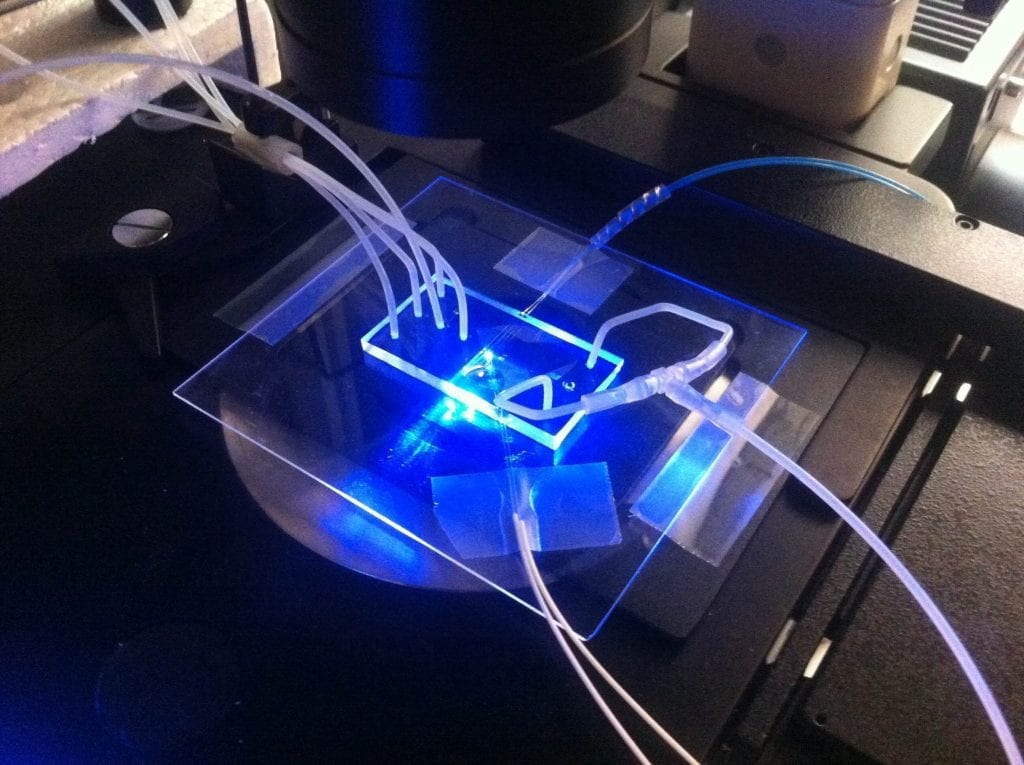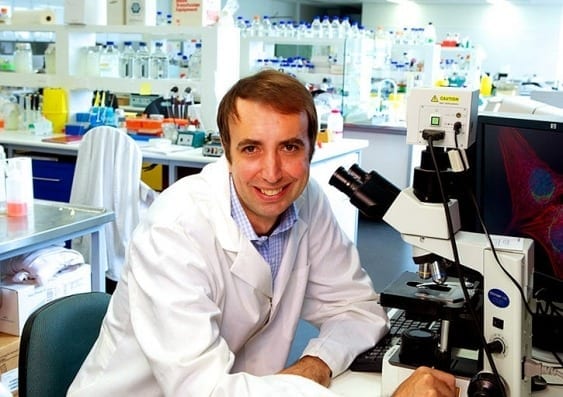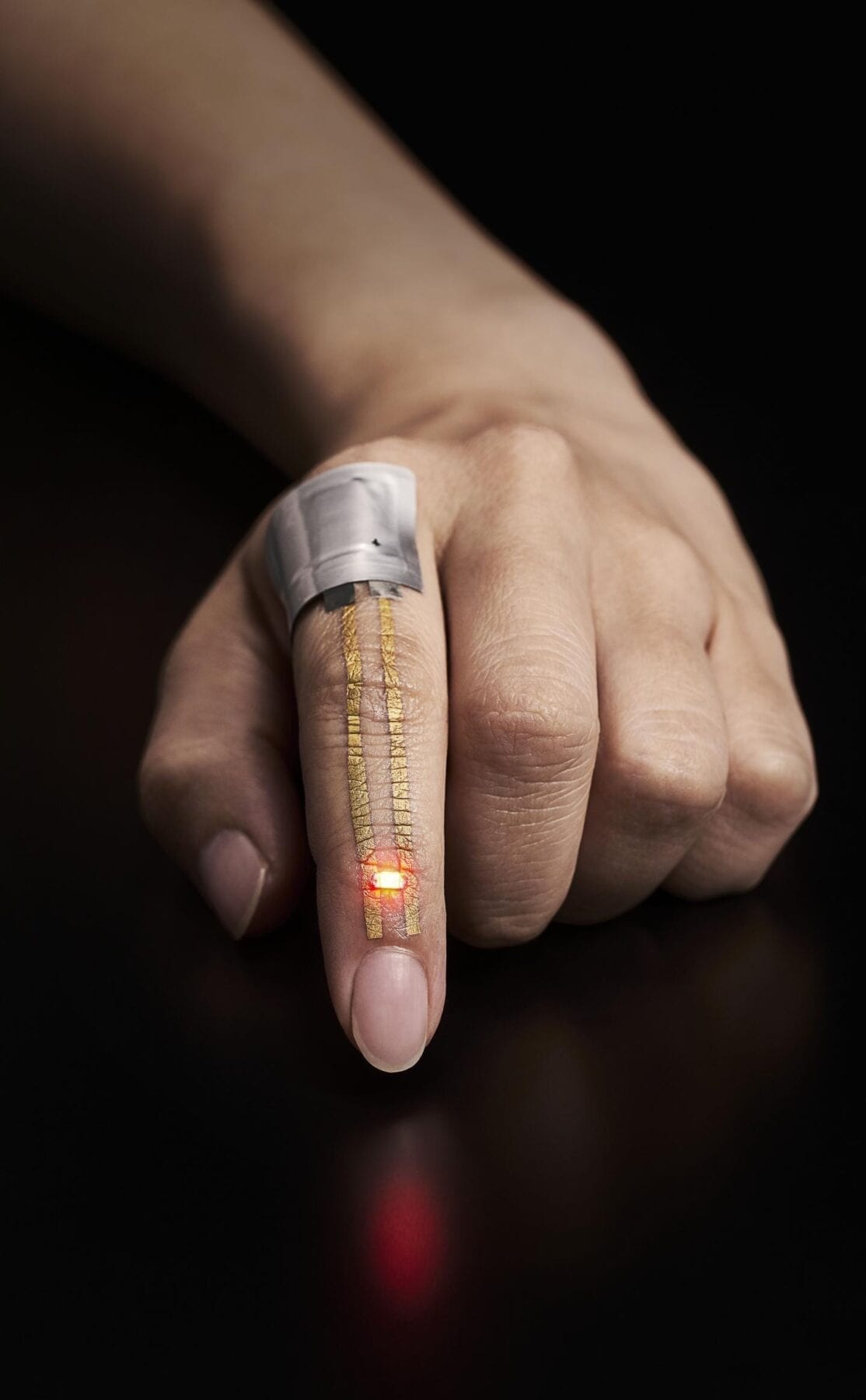
A team of researchers has patented a mobile device that can monitor cancer quickly, cheaply, effectively and non-invasively
Researchers at the URV’s Department of Physical and Inorganic Chemistry, led by the ICREA researcher, Ramon Álvarez Puebla, and the professor of Applied Physics, Francesc Díaz, and the Department of Clinical Oncology of the HM Torrelodones University Hospital, have patented a portable device that can detect tumour cells in blood.
The device counts the number of tumour cells in a blood sample in real time and is thus a highly effective tool for improving the monitoring, treatment and diagnosis of cancer.
Very useful for clinical use
The system has been successfully tested on patients in various stages of breast cancer and could be used to determine the presence of other tumours by analysing different antibodies in the blood sample.
Patients with cancer, particularly if it has metastasised, need to be constantly monitored during treatment to assess the progress of the disease. This is currently done using imaging techniques and biopsies which are invasive and not always possible. In contrast, the device designed by the URV researchers is highly sensitive and requires no surgery or treatment involving radiation. It is thus a highly useful clinical method because it improves patient quality of life by removing the need for the more invasive traditional procedures.
The device will be a useful tool for accurately determining a patient’s level of health because it can monitor cancer quickly, cheaply, effectively and non-invasively. Furthermore, it can assist in the early diagnosis of the disease and monitor tumours more effectively and in a manner that has a less negative effect on patients’ bodies.
Two integrated systems
The new device uses two systems in miniature: a flow system and an optical system. The first causes the blood cells to flow in alignment, while the second uses two optic fibres (a laser diode and a photodetector) to analyse the cells and count those which are cancerous and those which are not. The ratio between the two gives an understanding as to how the cancer is progressing.

Learn more: Researchers develop a device that detects tumour cells in blood
The Latest on: Cancer detection
[google_news title=”” keyword=”cancer detection” num_posts=”10″ blurb_length=”0″ show_thumb=”left”]- “Dancing With the Stars” alum Harry Jowsey reveals skin cancer diagnosis: 'Very scary'on April 27, 2024 at 12:47 pm
Dancing With the Stars alum Harry Jowsey has issued an important warning to his followers ahead of summer. The reality star was recently diagnosed with skin cancer on his shoulder, he announced in a ...
- Harry Jowsey reveals skin cancer diagnosis at age 26 — here’s what to know about the ‘scary’ diseaseon April 27, 2024 at 12:38 pm
Harry Jowsey has been diagnosed with skin cancer at the age of 26. The former “Dancing With The Stars” contestant revealed the shock health news in a TikTok video Friday evening, urging his followers ...
- Dozens attend prostate cancer early detection event in Isle of Wight Co.on April 27, 2024 at 9:34 am
Men packed a community room in a Rushmere-area church on Saturday to learn about prostate cancer before getting screened.
- Too Hot to Handle star Harry Jowsey reveals skin cancer diagnosison April 27, 2024 at 9:09 am
Harry Jowsey, a former contestant on the Netflix series Too Hot to Handle, has revealed his skin cancer diagnosis while urging fans to wear sunscreen. The Australian TV personality first appeared on ...
- King Charles to resume royal duties after cancer diagnosison April 27, 2024 at 4:49 am
King Charles III is set to resume royal duties following his cancer diagnosis.
- U.N. suspends investigations of several UNRWA workers accused of Hamas linkson April 27, 2024 at 12:12 am
A U.N. inquiry into 12 UNRWA workers alleged by Israel to be part of the Oct. 7 Hamas attack has cleared one. Three cases, lacking evidence, were suspended.
- King Charles plotting stunt to boost the nation at Trooping The Colour but docs could scupper it after cancer diagnosison April 26, 2024 at 5:00 pm
She will be telling him now how brave he is to go ahead with what he is doing while still undergoing treatment. The King’s cancer diagnosis — and his ability to get on with life despite it — has ...
- A timeline of King Charles' health struggles, from his cancer diagnosis to his return to public dutieson April 26, 2024 at 2:05 pm
Months after King Charles III was diagnosed with cancer, he is set to return to public-facing duties to visit a cancer treatment center.
- OCDE Superintendent Al Mijares announces retirement amid cancer diagnosison April 26, 2024 at 1:49 pm
After 12 years of serving as the Orange County Department of Education’s superintendent, Al Mijares will retire at the end of June. Mijares announced his retirement on Friday, April 26, citing medical ...
- King Charles returning to royal duties following cancer diagnosison April 26, 2024 at 10:28 am
King Charles is officially resuming royal engagements following his cancer diagnosis in January. Next week, he and Queen Camilla plan to visit a cancer treatment center.
via Google News and Bing News










